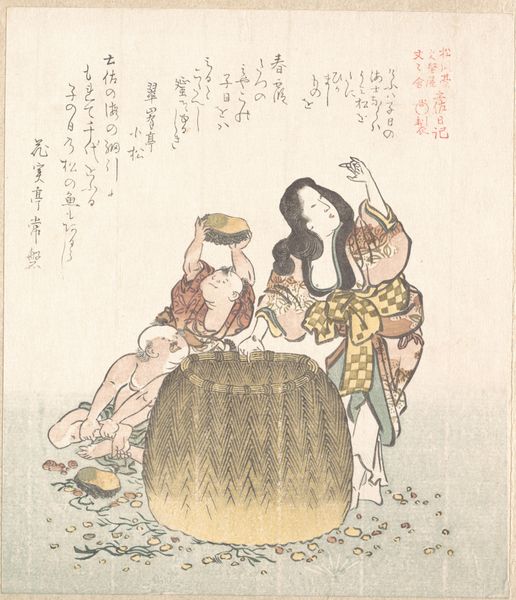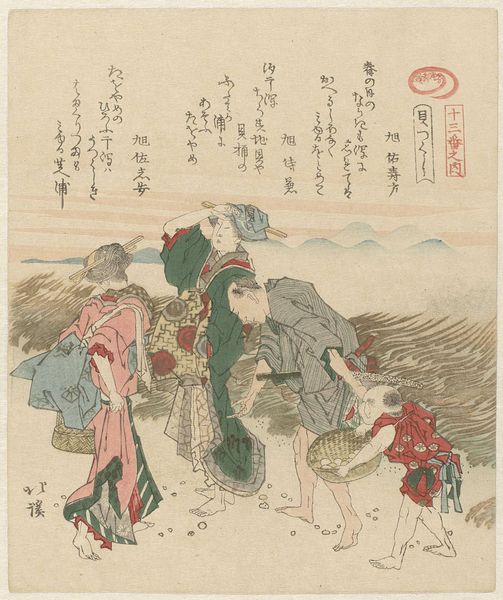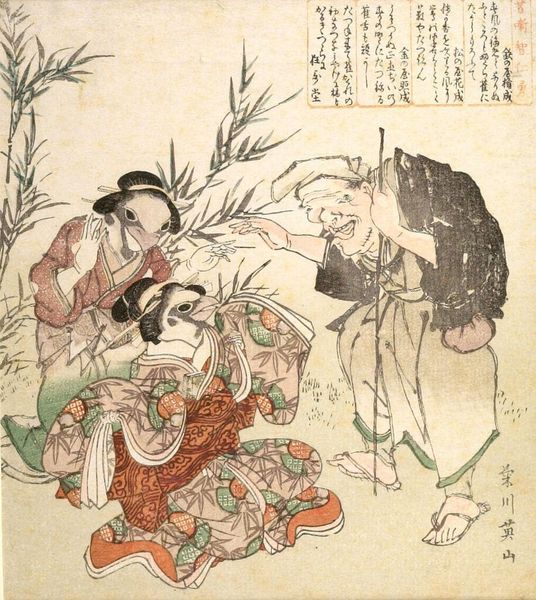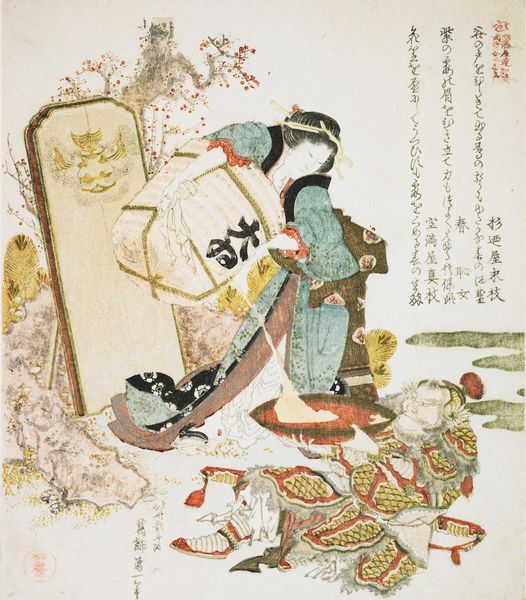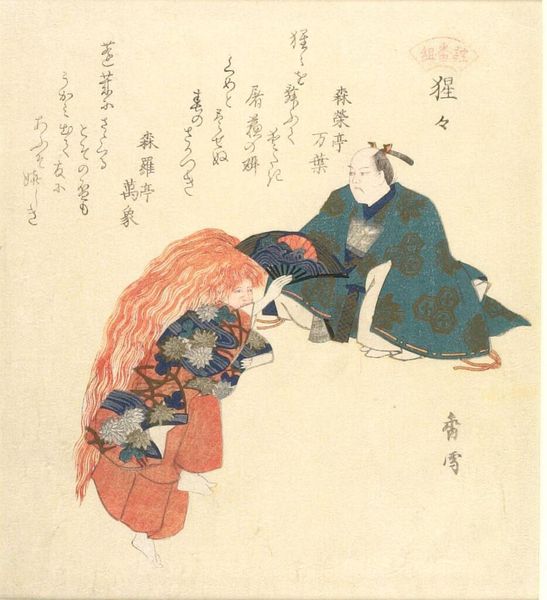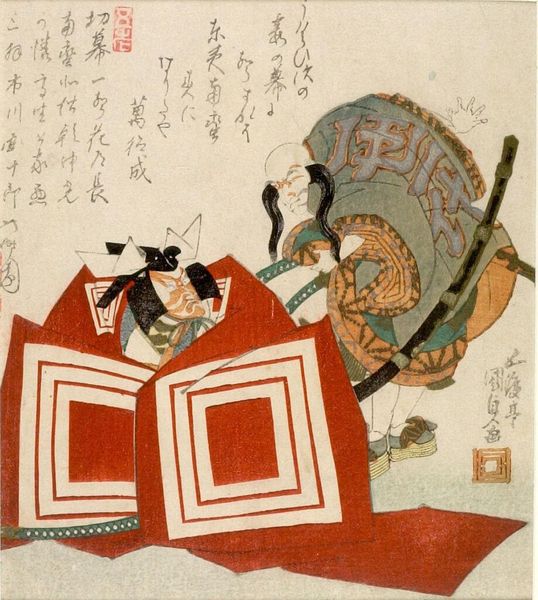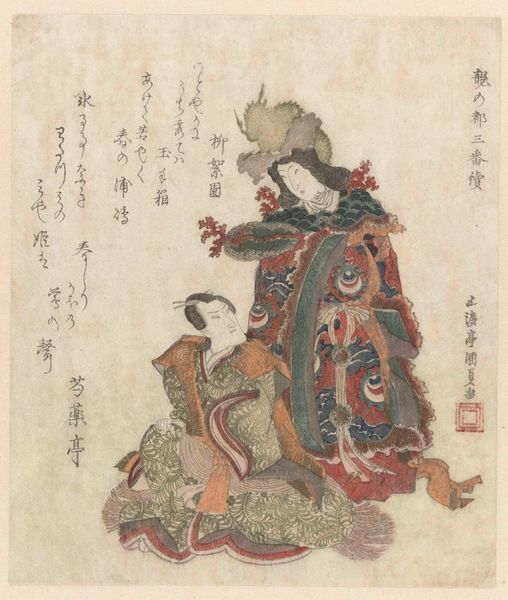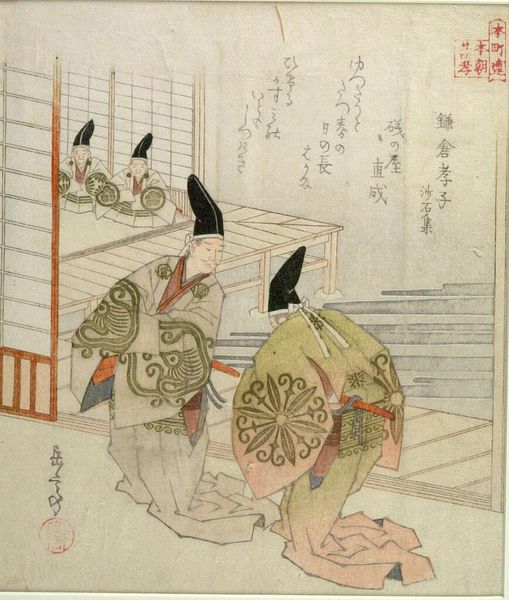
Awabi Shell Diver and Children with text beginning "KyÅ wa ne no hi no ama naraba kami matsu o oda ni hikamashi mono o...", from the Tosa Diary series (ShÅfudai Hisakataya Bunbunsha Tosa nikki), with poems by Kajitsute Tokiwa and associates c. 1815 - 1820
0:00
0:00
Dimensions: Paper: H. 20.1 cm x W. 17.7 cm (7 15/16 x 6 15/16 in.)
Copyright: CC0 1.0
Editor: This print, "Awabi Shell Diver and Children" by Kubo Shunman, part of the Tosa Diary series, shows a woman diver and children next to a large woven basket. The text above them suggests a poem. How does this image speak to the role and representation of women within its cultural context? Curator: It's a fascinating question. The poem references the “Day of the Rat,” a day for celebrating children, but what strikes me is the portrayal of the *ama*, the diver. She’s not just a mother, she's a worker. Consider her posture, the way she is framed alongside the labor she performs. This challenges conventional depictions of women in art, doesn't it? Editor: Yes, it shifts the focus from purely domestic roles to one of economic contribution. It also prompts a discussion around class. Were these divers romanticized or was their labor recognized? Curator: Precisely. Shunman gives visibility to a segment of society often overlooked in artistic representation, opening a dialogue on gender, class, and labor. It encourages us to reconsider established narratives. Editor: That's fascinating. I hadn't thought about it that way. Curator: Art is never neutral, is it? It always reflects—and sometimes resists—the dominant social forces.
Comments
No comments
Be the first to comment and join the conversation on the ultimate creative platform.
